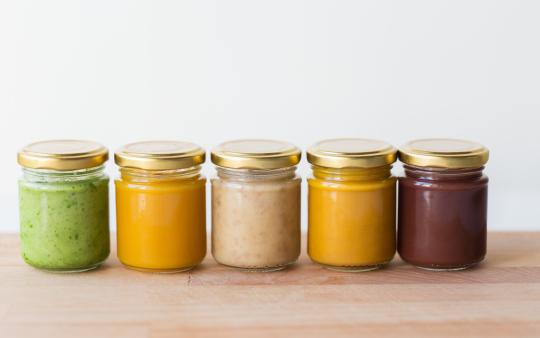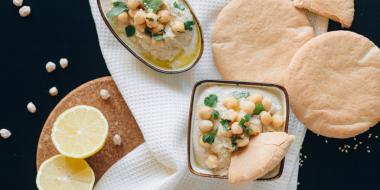“Baby food” and “delicious” are not generally used in the same sentence. Baby’s first “solids” tend to be overcooked, unseasoned gobs of unappetizing mush! But the first foods we eat in life should be our introduction to the world of nutrition and can play a big role in influencing how a child’s flavour palate develops.
Do babies have taste buds?
There is a long-standing myth that babies have an underdeveloped sense of taste, which is why bland baby foods like rice cereal have conventionally been the first food babies eat. The truth is that babies are actually born with more taste buds than adults and can even develop taste preferences in the womb! They have a strong affinity for sweet and umami flavors and have a primal instinct to dislike bitter foods. This reflects basic human instinct as breast milk and calorie-dense foods tend to be sweet and poisonous foods tend to be bitter. A taste for salt develops a little more slowly, coming into effect around five months and becoming a preferred taste for most of childhood.
That’s right, when your kid only wants macaroni and cheese and candy for dinner, they are only answering to their primal urges!
Taste buds change
Taste perception changes continually over a lifetime. As children reach adulthood, their preference for sweet and salty decreases and their inclination for umami and bitter increases. The ability to alter taste preference never fully goes away, as anyone who has made the jump to black coffee or dark chocolate can tell you.
Given the robustness of taste buds in children and the knowledge that taste preference can be influenced, it raises the question: why is baby food so bland?
Herbs and spices liven up foods, making eating a more sensory and interesting experience. New studies have shown that introducing a wide range of flavors early on may help to create a more complex palate in children and there are numerous benefits to introducing babies to herbs and spices from day one.
Spice it up! Flavour that delivers health
In addition to adding flavor, spices and herbs can add a medicinal element to food. Spices like cinnamon and cardamom are good for easing gas in colicky babies. Herbs like fennel or mint help ease digestion and upset stomach. Turmeric and nutmeg are anti-inflammatory. Rosemary and thyme are antimicrobial and great for colds. Sage and parsley are nutrient-dense and immune-boosting and are among the many herbs that you can grow at home.
Here are some great food and spice pairings that babies love:
|
Food |
Spice |
|---|---|
|
sweet potatoes, butternut and acorn squash, pumpkin |
cinnamon, allspice, nutmeg, cardamom, garam masala |
|
zucchini, potatoes, leafy greens |
rosemary, thyme, oregano, basil |
|
peas, eggplant, cucumbers |
mint |
|
poultry |
tarragon, sage |
|
fish |
dill |
Try these simple ways to prepare sweet potatoes:
Note that the following stages correlate with average tooth development, so gauge your baby’s ability to use their teeth to engage with the firmness of the food.
Stage 1 (at early solid food introduction)
Peel, chop and boil the sweet potatoes until they are easily pierced with a fork. Blend to a fine puree using some of the potato water and add a pinch or two of any spice.
Stage 2 (approximately 7-8 months)
Peel, chop, boil and mash into a chunky paste, adding a pinch or two of spice.
Stage 3 (approximately 9-12 months)
Peel and finely chop, toss the chunks with oil and spice, and roast at 400ºF for approximately 40-60 minutes (or until soft enough to easily mush with the back of a spoon).
Stage 4 (over 12 months)
Roughly chop with skin on, toss with oil and spice and roast at 400ºF for 40-60 min.
Foods can be kept in the refrigerator for up to 5 days or in the freezer for up to 3 months.
In general, wait until children are a bit older before trying anything overly spicy, like ginger, chili powder, or horseradish. It is also best to avoid salt and MSG, which offer little nutritional benefit and may train your child to prefer saltier foods. Try to steer clear of commercially produced spice blends as they tend to have hidden salt, (look for anything that has the words “sodium,” “glutamate,” or “glutamic acid”), dyes, and preservatives. Always make sure to watch for allergic reaction before trying any new food.
Remember that kids often need repeated exposure to new flavors before they adjust to them, so try not to get discouraged if the initial response is less than enthusiastic. Be adventurous and have fun as you take your baby around the world of spice.






